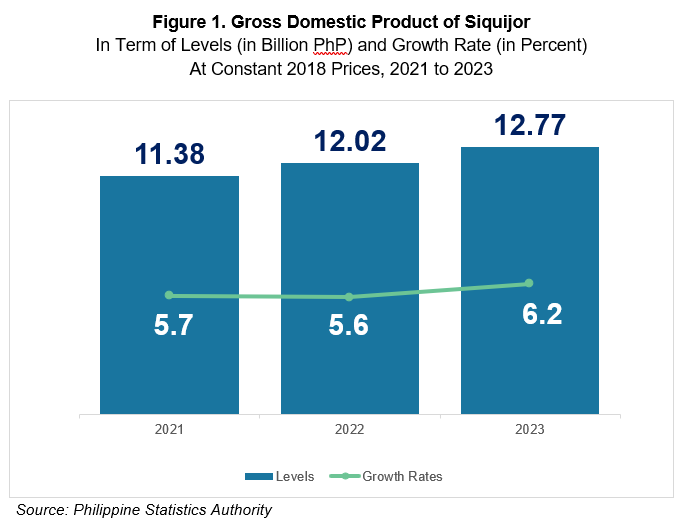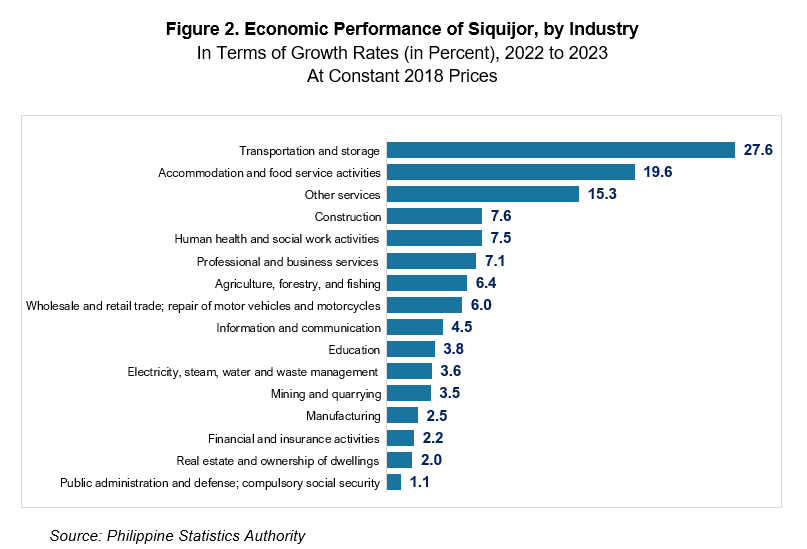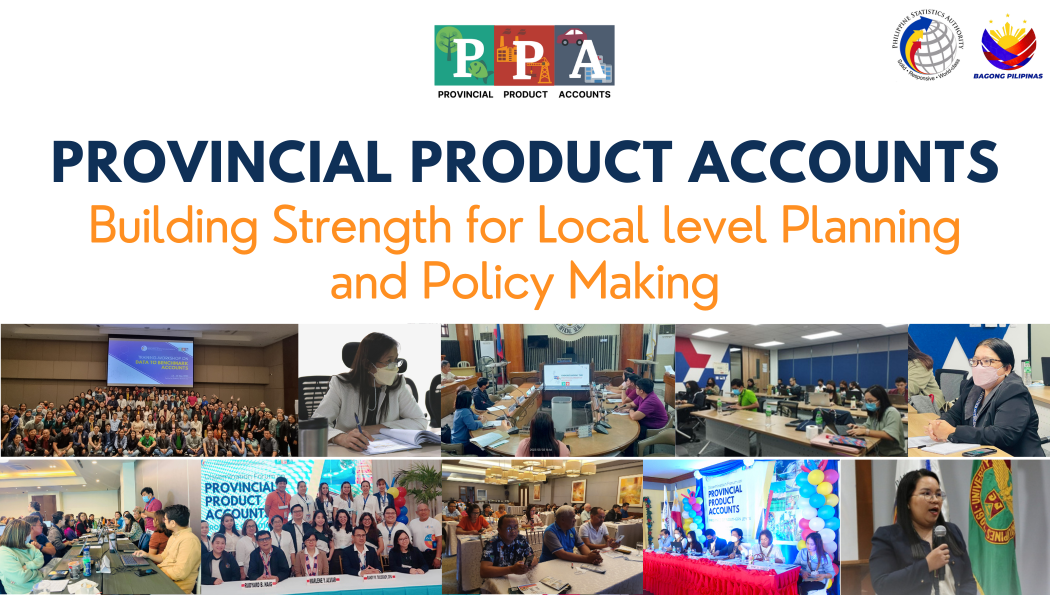Provincial Product Accounts (PPA)
Siquijor’s Economy Records a 6.2 Percent Increase in 2023
Release Date:Reference Number: 2024-PR61-022The economy of Siquijor grew by 6.2 percent in 2023 from its 2022 level, faster than the 5.6 percent growth in the previous year. This represents an increase in the value of Gross Domestic Product (GDP) from PhP 12.02 billion in 2022 to PhP 12.77 billion in 2023. The GDP level in 2023 exceeded the 2019 pre-pandemic level by PhP 1.43 billion. (Figure 1)

Among the 16 industries, the fastest growths were observed in Transportation and storage with 27.6 percent, followed by Accommodation and food service activities with 19.6 percent, and Other services with 15.3 percent. (Figure 2)

Full data series, charts, and data visuals of the results of the Provincial Product Accounts (PPA) of Siquijor can be accessed at the PPA landing page of the Philippine Statistics Authority (PSA) (psa.gov.ph/statistics/ppa), and the PSA Regional website (rsso07.psa.gov.ph/statistics/ppa).
sgd.
JOSELITO C. MAGHANOY
(Supervising Statistical Specialist)
Officer-In-Charge
Attachment Size  2024-PR61-022
2024-PR61-022557.17 KB





